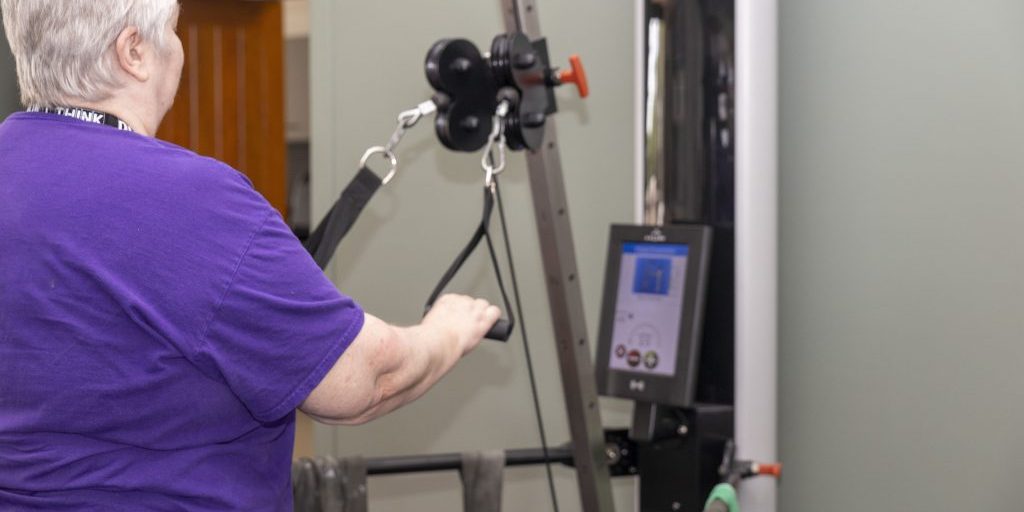What is dementia?
Dementia is a term for several diseases, including Alzheimer’s Disease, that affect memory, thinking, and the ability to perform daily activities. It mainly affects older people, but not all people will get dementia as they age. It is not a normal part of ageing.
Dementia typically leads to deterioration in cognitive function, and that deterioration is commonly accompanied by changes in mood, emotional control and behaviour. The disease has physical, psychological, social and economic impacts, not only for people living with dementia, but also for their carers, families and society.
Most symptoms become worse over time; however, some people do continue to lead fulfilling lives for many years after being diagnosed. As the disease progresses, the need for help with personal care increases.
There is currently no cure for dementia, although researchers around the world are working on new treatments.
(World Health Organisation)
How prevalent is dementia in Australia?
In 2023, the Australian Institute of Health and Welfare estimated there were around 411,100 people living with dementia in Australia. This included nearly 257,500 women, and 153,700 men. This is equivalent to 15 people with dementia per 1000 Australians. The rate of dementia rises quickly with age, from fewer than one person with dementia per 1000 Australians aged under 60, to 71 per 1000 Australians aged 75–79, and then to 429 per 1000 Australians aged 90 and over.
(Australian Institute of Health and Welfare)
What are the risk factors for dementia?
There is no sure-fire way to prevent dementia, but there are a number of identifiable risk factors that anyone can be aware of, no matter their age. According to a 2024 Lancet Commission study (https://www.thelancet.com/journals/lancet/article/PIIS0140-6736(24)01296-0/abstract) up to 45 per cent of dementia cases could be prevented or delayed by addressing the following risk factors:
- Limited education
- Hypertension (high blood pressure)
- Hearing loss
- Smoking
- Obesity
- Depression
- Physical inactivity
- Diabetes
- Traumatic brain injury
- Excessive alcohol
- Low social contact
- Exposure to air pollution
- Untreated vision loss
- High LDL cholesterol
Research is also underway exploring the links between gut health, and inflammatory diseases like gout, and dementia.
(Royal Australian College of General Practitioners)
What are the early warning signs of dementia?
- Memory changes affecting day to day abilities – forgetting things more often, struggling to retain new information, asking the same question multiple times.
- Difficulty with familiar tasks – getting confused doing regular tasks, such as preparing a meal, or getting dressed. Struggling with the day-to-day routine.
- Changes in communication – forgetting words, getting words mixed up, or struggling to keep up with conversation and having trouble understanding what people are saying.
- Disorientated about time and place – unsure what day of the week it is, and struggling with terms like ‘yesterday’, and ‘tomorrow’. Having trouble finding your way to familiar places and forgetting where you live and how to get there.
- Impaired judgement – unable to recognise bad decisions that could impact health and safety, for example not wearing warm clothes on a cold day. Not realising when you need to seek medical help.
- Problems with abstract thinking – issues understanding symbols, or numbers, and being unable to manage finances and paying bills.
- Misplacing items – regularly losing everyday items like house keys, or putting things in the wrong place, for example, putting your wallet in the fridge.
- Changes in mood, personality, and behaviour – severe mood swings, becoming tearful, moody or upset on a regular basis, and in some cases, becoming physically aggressive.
- Loss of initiative – losing interest in friends, family, and doing favourite activities. Struggling to keep up with housework and personal hygiene.
- Issues with vision and spatial awareness – seeing things that aren’t there, struggling to find their way around furniture, or placing breakable items right on the edge of a table or bench.
(Alzheimer Society of Canada)
Types of dementia
Alzheimer’s disease
Alzheimer’s disease is the most common form of dementia and accounts for approximately two thirds of cases. It is a progressive degenerative illness that attacks the brain and causes gradual increase in cognitive (memory and thinking) problems.
In Alzheimer’s disease, the physical damage in the brain is caused by amyloid plaques and neurofibrillary tangles.
Vascular dementia
Vascular dementia is the broad term for dementia associated with disease in the blood vessels of the brain. This blood vessel disease affects the circulation of blood to the brain and causes damage.
Vascular dementia may appear similar to Alzheimer’s disease. A mixture of Alzheimer’s disease and vascular dementia can occur in some people. Vascular dementia is the second most common form of dementia and there are several different types.
Subcortical vascular dementia
This type of vascular dementia is caused by disease in the small blood vessels deep within the brain, which damages the subcortical (deep) areas of the brain. Subcortical vascular dementia can be related to untreated high blood pressure or diabetes that leads to vascular disease. It is caused by high blood pressure, thickening of the arteries and inadequate blood flow.
Symptoms often include deterioration of reasoning and thinking skills, mild memory problems, walking and movement problems, behavioural changes and lack of bladder control.
Subcortical vascular dementia is usually progressive, with symptoms getting worse over time as more vascular damage occurs, although the person’s abilities can fluctuate.
Lewy body disease
Lewy body disease (LBD) is an umbrella term that describes conditions characterised by the formation of clumps in the brain called Lewy bodies. The clumps build up in brain cells and are made of a protein called alpha-synuclein. These clumps occur in specific areas of the brain, causing changes in movement, thinking and behaviour.
People with LBD may experience large fluctuations in attention and thinking. They can go from almost normal performance to severe confusion within short periods. Visual hallucinations are also a common symptom.
Dementia with Lewy bodies
If the first symptoms to appear are changes to the person’s thinking and behaviour, the diagnosis will be dementia with Lewy bodies.
Parkinson’s disease
If the first symptoms to appear are movement symptoms, the diagnosis will be Parkinson’s disease. These symptoms include tremors, stiffness in limbs and joints, speech impediments and difficulty initiating physical movements.
Parkinson’s disease dementia
Most people with Parkinson’s disease will develop symptoms of dementia. If the symptoms affecting movement appear first and are followed by symptoms affecting thinking and behaviour, the diagnosis will be Parkinson’s disease dementia.
Frontotemporal dementia
Frontotemporal dementia (FTD) is the name given to a group of dementias that involve degeneration in one or both frontal or temporal lobes of the brain.
The frontal and temporal lobes of the brain are involved in mood, social behaviour, attention, judgement, planning and self-control. Damage to these areas of the brain can lead to a decrease in intellectual abilities and changes in personality, emotion and behaviour. Damage can also cause difficulty in recognising objects or understanding or expressing language. Unlike Alzheimer’s disease, memory might not be affected, especially early on.
Behavioural-variant FTD
In the frontal or behavioural variant of FTD, there are changes in the person’s behaviour, habits, personality or emotional responses. Symptoms vary from person to person, depending on which areas of the frontal lobes are damaged. Some people with behavioural-variant FTD become very apathetic, while others will lose their inhibitions.
Younger-onset dementia
The term younger-onset dementia is usually used to describe any form of dementia diagnosed in people under the age of 65 years. It is also sometimes called early-onset dementia. Dementia in younger people is much less common than dementia occurring after the age of 65, but it is sometimes diagnosed in people between the ages of 30 and 60. Younger-onset dementia can be difficult to diagnose, and it is not clear how widespread it is.
(Victoria State Government Department of Health)






